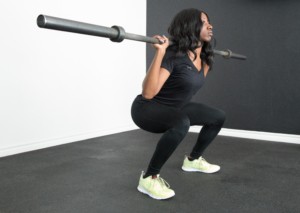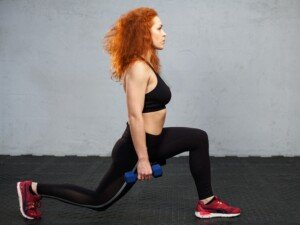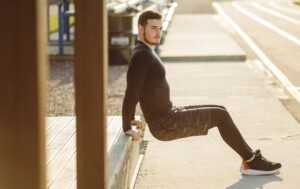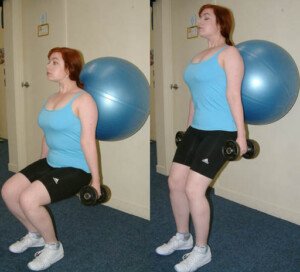
Here is your simple, no-nonsense guide to WHY a beginner should do compound weightlifting exercises.
If the weight being lifted is light enough, any beginner can handle any compound strength training move. Think about that if you’re still skeptical.
Even for more intricate compound weight lifting moves, such as the hang clean, a broom stick can be used so that the novice can practice the motions and get them down really good.
The next step would then be using a 20-pound barbell.
There are many compound moves in strength training, and the more simpler ones are the following: bench press, rows, body weight or dumbbell squats, and leg press.
These are simple in that the form is relatively easy to learn.

Freepik/master1305
Squats can be done lightly holding onto a stable support, and the beginner can hold dumbbells at his or her sides instead of supporting a free barbell across the back.
Beginners can also do tracked barbell squats.
Compound weight lifting simply means a routine that uses more than one joint during the lift, or a multi-joint exercise.
There’s no reason why beginners can’t do compound, or multi-joint strength training.
Another example of compound training, that the novice can benefit from, is that of the lunge, either stationary or done walking.

Shutterstock/Artsplav
The beginner can perform this compound routine without holding weights, even, and still benefit.
Compound moves are done throughout the day as you live your life, such as when hoisting up a garbage bag and slinging it into a trash container; picking up kids and then setting them down; and even getting up out of a chair (the upward phase of a squat!).
Yes, getting out of a chair is essentially the “positive” phase of a squat.
Need I say that settling down into a chair is the downward (“negative”) phase of a squat? Unless you lazily fall into the chair.
Are there compound weight lifting routines that beginners should avoid? It depends on the body position and amount of resistance.
For example, full-body-weight seated dips, in which the legs are straight and the feet (heels) are on a second bench, are too advanced for a beginner.
Beginners to strength training cannot do these, and attempting to do so may result in shoulder injury. Same with parallel bar dips.
The novice also needs to be aware of not over-loading barbells when performing compound routines like deadlifts.
These can be practiced for high reps with body weight only, then light weights.

Shutterstock/Nicholas Piccillo
Beginners also almost always cannot do a true, good-form pushup — another compound exercise, unless knees are on the floor, and even then, this can be difficult.
Modified pushups (knees on floor, hands pushing off an elevated surface) can be done to prep the novice strength trainer for “real” pushups.
Beginners, no matter how weak, can do the compound routines of bench presses, deadlifts, good-mornings, seated cable pulley rows, standing barbell rows, “machine” rows, T-bar rows (with or without support), one-arm bent-over rows, squats with body weight only (or light dumbbells and barbells), and modified seated dips, in which the legs are bent, feet on floor.

Freepik/bristekjegor
Chin-ups and pull-ups are also compound moves, and beginners, of course, will find these very difficult.
However, they can gear up for them, as well as parallel bar dips, by using chin/dip assist machines.
Beginners should get used to dumbbell squats and tracked barbell squats before moving on to free barbell squats.

Freepik/fxquadro
Bench pressing can be done with just the Olympic bar (45 pounds) or fixed-weight lighter barbells.
Of course, any rowing variation can be done with the lightest amount of weight.
More advanced compound lifting moves, such as in Olympic style, can still be performed by beginners, but focus should be on mastering form and technique before piling on the weight load.
Novices can also create compound moves, such as squatting while holding dumbbells, then after standing up, pressing the weights overhead.
Or, they can do wall squats against a stability ball while simultaneously doing dumbbell curls.

tepanek, CreativeCommons









































